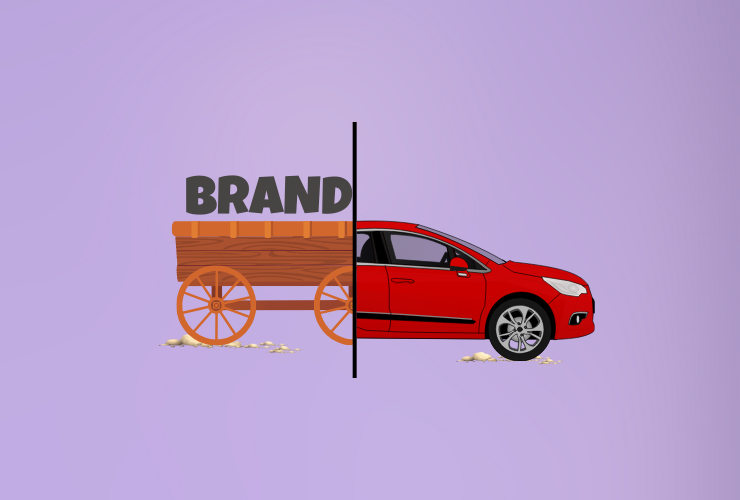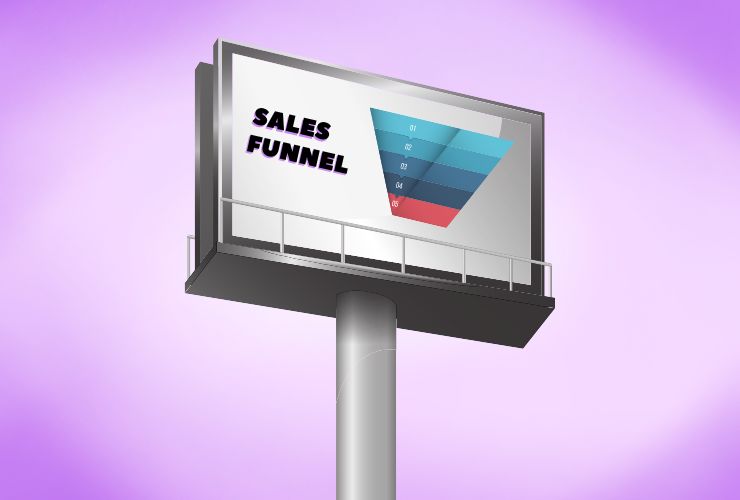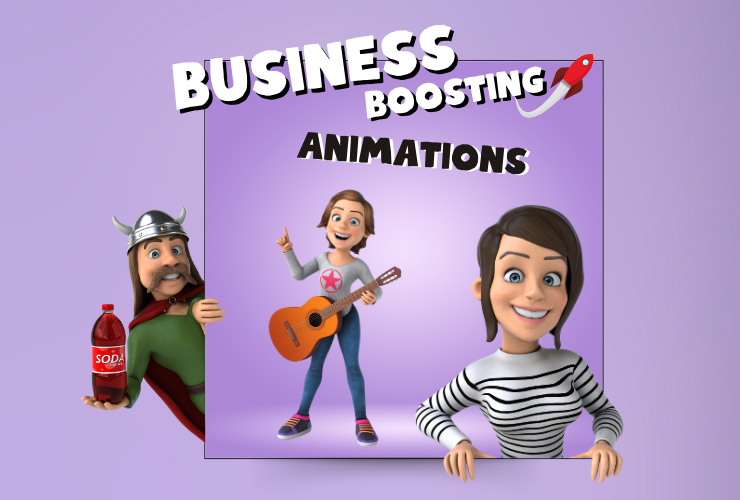Where Does Display Advertising Fit in the Sales Funnel?
Display advertising is a powerful tool that can be used to reach your target audience at every stage of the sales funnel. From creating brand awareness to driving conversions, display ads can help you achieve your marketing goals.
In this blog post, we will explore how display advertising can be used to fit into each stage of the sales funnel. We will also discuss the key factors to consider when creating and optimizing your display ad campaigns.
So whether you are just starting out with display advertising or you are looking to improve your results, this blog post is for you.
Where Does Display Advertising Fit in the Sales Funnel?
The sales funnel is a marketing concept that describes the journey that a potential customer takes from first learning about your product or service to becoming a loyal customer. The funnel is divided into several stages, each of which represents a different point in the customer's journey:
- Awareness: This is the stage where the customer first becomes aware of your brand. They may have seen an ad, read a blog post, or heard about you from a friend.
- Interest: In this stage, the customer is starting to learn more about your product or service and is considering whether or not it is a good fit for them.
- Consideration: This is the stage where the customer is actively comparing your product or service to others. They are looking for information that will help them make a decision.
- Conversion: This is the stage where the customer decides to buy your product or service.
- Loyalty: This is the stage where the customer becomes a repeat customer and advocates for your brand to others.
Breakdown of the Sales Funnel Stages
- Awareness
At the awareness stage, the customer is not yet familiar with your brand or product. They may not even know that they have a problem that your product can solve. Your goal at this stage is to create brand awareness and generate interest.
You can do this by creating display ads that are seen by people who are not yet familiar with your brand. Your ads should be relevant to the interests of your target audience and should make them want to learn more about your product or service.
- Interest
In the interest stage, the customer is starting to learn more about your product or service and is considering whether or not it is a good fit for them. Your goal at this stage is to provide more information about your product or service and answer any questions that the customer may have.
You can do this by creating display ads that feature product reviews, case studies, or other content that will help the customer learn more about your product or service.
- Consideration
In the consideration stage, the customer is actively comparing your product or service to others. They are looking for information that will help them make a decision. Your goal at this stage is to provide the customer with the information they need to make a decision.
You can do this by creating display ads that highlight the benefits of your product or service and compare it to the competition.
- Conversion
In the conversion stage, the customer decides to buy your product or service. Your goal at this stage is to make it easy for the customer to buy.
You can do this by creating display ads that include a call to action, such as "Click here to buy" or "Sign up for a free trial."
- Loyalty
In the loyalty stage, the customer becomes a repeat customer and advocates for your brand to others. Your goal at this stage is to keep the customer happy and engaged.
You can do this by creating display ads that offer discounts, promotions, or other incentives to keep the customer coming back. You can also create display ads that feature customer testimonials or case studies.
Explanation of Customer Behavior and Mindset at Each Stage
The customer's behavior and mindset will vary at each stage of the sales funnel.
- Awareness: At the awareness stage, the customer is not yet familiar with your brand or product. They are not actively looking for a solution to their problem, but they may be open to learning more about new products or services.
- Interest: In the interest stage, the customer is starting to learn more about your product or service and is considering whether or not it is a good fit for them. They are likely to be doing research online and comparing your product or service to others.
- Consideration: In the consideration stage, the customer is actively comparing your product or service to others. They are looking for information that will help them make a decision. They may be reading reviews, comparing prices, or talking to friends and family.
- Conversion: In the conversion stage, the customer decides to buy your product or service. They may have already made a decision, or they may be persuaded by a final call to action.
- Loyalty: In the loyalty stage, the customer becomes a repeat customer and advocates for your brand to others. They are satisfied with your product or service and are likely to recommend it to others.
Emphasis on the Need for Diverse Marketing Approaches
It is important to use a variety of marketing approaches to reach your target audience at every stage of the sales funnel. This is because different people respond to different marketing messages. For example, some people are more likely to be influenced by visual content, while others are more likely to be influenced by text content.
By using a variety of marketing approaches, you can reach a wider audience and increase your chances of converting leads into customers. Some of the different marketing approaches that you can use include:
- Search advertising: This is a type of online advertising where your ad is displayed when someone searches for a keyword related to your product or service.
- Display advertising: This is a type of online advertising where your ad is displayed on websites or in apps that are relevant to your target audience.
- Social media marketing: This is a type of marketing that uses social media platforms to reach your target audience.
- Email marketing: This is a type of marketing that involves sending emails to your subscribers.
- Content marketing: This is a type of marketing that involves creating and sharing valuable content that attracts and engages your target audience.
- Public relations: This is a type of marketing that involves building positive relationships with the media and other influencers.
By using a combination of these marketing approaches, you can create a comprehensive marketing strategy that will reach your target audience and help you achieve your marketing goals.
What is Display Advertising?
Definition and characteristics: Display advertising is a type of online advertising that uses visuals, such as images, videos, and text, to promote products or services. It is typically used to reach a large audience and build brand awareness, but it can also be used to target specific demographics or interests.
Formats: There are many formats of display advertising, including:
- Banner ads: These are the most common type of display ad. They are typically rectangular in shape and appear at the top, bottom, or sides of a web page.
- Pop-ups: These ads appear in a new window when a user visits a website. They can be disruptive, but they can also be very effective at grabbing attention.
- Video ads: These ads can be either pre-roll (played before a video starts) or in-stream (played during a video). They are a great way to tell a story or showcase a product or service.
- Interactive ads: These ads allow users to interact with them in some way. For example, they might be able to play a game, participate in a quiz, or answer a question.
- Native ads: These ads are designed to blend in with the surrounding content, making them less disruptive to the user experience.
- Sponsored content: This is a type of native ad that is written in the style of editorial content.
- Gamified ads: These ads use games or other interactive elements to engage users.
Advantages: Display advertising has a number of advantages, including:
- Brand visibility: Display ads can help to increase brand awareness by putting your brand in front of a large audience.
- Targeting options: Display ads can be targeted to specific demographics, interests, and even past browsing behavior. This allows you to reach the people who are most likely to be interested in your products or services.
- Creative flexibility: Display ads can be highly creative and engaging. This makes them a great way to stand out from the competition and capture attention.
- Measurability: Display ads are measurable, so you can track the results of your campaigns and see how they are performing.
Display Advertising in the Sales Funnel
Top of Funnel (Awareness)
The top of the funnel is where potential customers are first learning about your brand. Your goal at this stage is to generate brand awareness and interest. Display advertising can be a great way to do this by reaching a large audience with your message.
Here are some strategies for generating brand awareness through display ads:
- Use eye-catching visuals and creative headlines to grab attention.
- Target your ads to specific demographics or interests.
- Place your ads on high-traffic websites or in popular apps.
- Run retargeting campaigns to reach people who have already visited your website or shown interest in your products or services.
Middle of Funnel (Interest & Consideration)
In the middle of the funnel, potential customers are starting to research their options and consider making a purchase. Your goal at this stage is to nurture leads and keep your brand top-of-mind.
Here are some ways to nurture leads with display ads:
- Offer discounts or coupons to encourage people to sign up for your email list or download your free ebook.
- Run retargeting campaigns to show ads to people who have abandoned their shopping carts or visited your product pages.
- Create display ads that showcase the benefits of your products or services.
- Use social media ads to connect with potential customers on the platforms they use most often.
Bottom of Funnel (Conversion & Loyalty)
At the bottom of the funnel, potential customers are ready to make a purchase. Your goal at this stage is to drive conversions and encourage customer loyalty.
Here are some ways to use display ads to drive conversions:
- Promote special offers or limited-time discounts.
- Offer free shipping or other incentives.
- Use clear and concise calls to action, such as "Buy Now" or "Sign Up."
- Track the results of your campaigns so you can see what's working and make necessary adjustments.
Reinforcing customer loyalty and upselling:
Once you've made a sale, it's important to keep your customers coming back for more. You can use display ads to reinforce customer loyalty and upsell by:
- Sending abandoned cart reminders.
- Offering loyalty programs or discounts for repeat customers.
- Promoting related products or services.
- Running retargeting campaigns to show ads to people who have already made a purchase.
By using display advertising at each stage of the sales funnel, you can reach your target audience with relevant messages and nurture them along the way to conversion.
Targeting and Personalization in Display Advertising
When it comes to display advertising, targeting the right audience is essential for success. By targeting your ads to people who are most likely to be interested in your products or services, you can improve your click-through rate (CTR), conversion rate, and return on investment (ROI).
There are a number of factors to consider when targeting your display ads, including:
- Demographics: This includes factors such as age, gender, location, income, and interests.
- Behavioral: This includes factors such as past website visits, search history, and app usage.
- Contextual: This includes factors such as the content of the website or app where the ad is being displayed.
By understanding your target audience and using the right targeting methods, you can create display ads that are more likely to be seen and clicked on by the people who matter most to your business.
Behavioral targeting
Behavioral targeting is a type of targeting that allows you to show ads to people based on their past behavior. This can be done by tracking their website visits, search history, or app usage.
For example, if someone has visited your website about hiking boots, you could show them ads for hiking boots on other websites they visit. Or, if someone has searched for "cheap flights to Paris," you could show them ads for flights to Paris on your website.
Demographic targeting
Demographic targeting allows you to show ads to people based on their demographics, such as age, gender, location, income, and interests.
For example, if you are selling baby products, you could show your ads to women who are in their 20s and 30s. Or, if you are selling luxury cars, you could show your ads to people who live in high-income neighborhoods.
Contextual targeting
Contextual targeting allows you to show ads to people based on the content of the website or app where the ad is being displayed.
For example, if you are selling camping gear, you could show your ads on websites about camping or hiking. Or, if you are selling insurance, you could show your ads on websites about financial planning.
Tailoring display Ads to resonate with specific funnel stages
In addition to targeting your ads to the right audience, it is also important to tailor your ads to resonate with specific funnel stages. The different stages of the funnel are:
- Awareness: This is the stage where people are first learning about your brand. Your goal at this stage is to generate brand awareness and interest.
- Consideration: This is the stage where people are starting to research their options and consider making a purchase. Your goal at this stage is to nurture leads and keep your brand top-of-mind.
- Conversion: This is the stage where people are ready to make a purchase. Your goal at this stage is to drive conversions.
By tailoring your ads to the specific stage of the funnel, you can increase your chances of success. For example, at the awareness stage, you might use more general ads that introduce your brand and its products or services. At the consideration stage, you might use more specific ads that highlight the benefits of your products or services. And at the conversion stage, you might use more persuasive ads that encourage people to make a purchase.
Metrics and Measurement in Display Advertising
Key performance indicators (KPIs) for display advertising
Key performance indicators (KPIs) are the metrics that you use to measure the success of your display advertising campaigns. The specific KPIs that you use will depend on your goals, but some common KPIs for display advertising include:
- Click-through rate (CTR): This is the percentage of people who see your ad and click on it.
- Conversion rate: This is the percentage of people who click on your ad and take the desired action, such as making a purchase or signing up for your email list.
- Return on ad spend (ROAS): This is the amount of money you make for every dollar you spend on advertising.
- Reach: This is the number of people who see your ad.
- Impressions: This is the number of times your ad is displayed.
- Frequency: This is the average number of times each person sees your ad.
Tracking effectiveness at different funnel stages
In addition to tracking overall KPIs, it is also important to track the effectiveness of your display advertising campaigns at different funnel stages. This will help you understand how your ads are resonating with your target audience and make necessary adjustments to your campaigns.
The different stages of the funnel are:
- Awareness: This is the stage where people are first learning about your brand. Your goal at this stage is to generate brand awareness and interest.
- Consideration: This is the stage where people are starting to research their options and consider making a purchase. Your goal at this stage is to nurture leads and keep your brand top-of-mind.
- Conversion: This is the stage where people are ready to make a purchase. Your goal at this stage is to drive conversions.
By tracking the effectiveness of your campaigns at each stage of the funnel, you can identify which ads are working and which ones need improvement. This will help you optimize your campaigns and improve your results.
Adjusting Strategies based on Data Insights
The final step in measuring the success of your display advertising campaigns is to adjust your strategies based on the data insights you have gathered. This means regularly reviewing your KPIs and making changes to your campaigns as needed.
For example, if you see that your CTR is low, you might need to change your ad creative or targeting. Or, if your conversion rate is low, you might need to change your landing page or offer.
By staying on top of your data and making adjustments as needed, you can ensure that your display advertising campaigns are as effective as possible.
Challenges and Best Practices in Display Advertising
Ad viewability and ad-blockers
One of the biggest challenges in display advertising is ensuring that your ads are viewable. Ad viewability is the percentage of times that an ad is actually seen by a user.
There are a number of factors that can affect ad viewability, including:
- The size and placement of the ad.
- The speed of the website or app.
- The use of ad blockers.
Ad blockers are software programs that prevent ads from being displayed on websites and apps. They are becoming increasingly popular, as users become more frustrated with the amount of advertising online.
To improve ad viewability, it is important to make sure that your ads are large enough to be seen and that they are placed in a prominent location on the page. You should also avoid using pop-ups and other intrusive ad formats.
If you are concerned about ad blockers, you can use a service that measures ad viewability and helps you to block ad blockers.
Ad fatigue and creative refreshment
Another challenge in display advertising is ad fatigue. Ad fatigue is the phenomenon of users becoming less likely to pay attention to ads that they have seen repeatedly.
To avoid ad fatigue, it is important to refresh your ad creative regularly. This means changing the images, text, and other elements of your ads on a regular basis.
You can also use A/B testing to test different ad creative and see what works best for your audience.
A/B testing and optimization for better results
A/B testing is a method of comparing two versions of an ad to see which one performs better. This can be done by changing the headline, image, text, or other elements of the ad.
A/B testing is a powerful tool that can help you to improve the performance of your display advertising campaigns. By testing different versions of your ads, you can identify the elements that are most effective and use them to create more successful campaigns.
Other best practices for display advertising
In addition to the challenges mentioned above, there are a number of other best practices for display advertising. These include:
- Targeting your ads to the right audience.
- Using relevant keywords and ad copy.
- Creating compelling ad creative.
- Tracking the results of your campaigns and making adjustments as needed.
By following these best practices, you can create display advertising campaigns that are effective and successful.
Integrating Display Advertising with Other Strategies
Synergy with social media, content marketing, and search engine optimization
Display advertising can be a powerful tool for reaching your target audience, but it is even more effective when it is integrated with other marketing strategies.
Social media, content marketing, and search engine optimization (SEO) are three marketing strategies that can be used to complement display advertising.
Social media can be used to build relationships with your target audience and drive traffic to your website. You can use social media to share your ads, promote your content, and engage with potential customers.
Content marketing is the creation and distribution of valuable, relevant content to attract and retain a target audience. By creating high-quality content that is relevant to your target audience, you can attract them to your website and generate leads.
SEO is the process of optimizing your website for search engines so that it appears higher in search results. By optimizing your website for relevant keywords, you can attract more visitors to your website and increase your chances of converting them into customers.
When you integrate display advertising with social media, content marketing, and SEO, you can create a holistic marketing approach that reaches your target audience on multiple channels and drives results.
Creating a holistic marketing approach for maximum impact
A holistic marketing approach is one that uses a variety of marketing channels to reach your target audience. This can include display advertising, social media, content marketing, SEO, email marketing, and more.
By using a holistic approach, you can reach your target audience on the channels they are most likely to be using and deliver the right message at the right time. This can help you to improve your brand awareness, generate leads, and drive sales.
Here are some tips for creating a holistic marketing approach:
- Start by understanding your target audience. What are their interests? What channels do they use? What are their pain points?
- Set clear goals for your marketing campaigns. What do you want to achieve? Increase brand awareness? Generate leads? Drive sales?
- Choose the right marketing channels for your audience and goals. Not all channels are created equal. Make sure you choose the channels that are most likely to reach your target audience and help you achieve your goals.
- Create a consistent message across all channels. Your message should be clear, concise, and relevant to your target audience.
- Track the results of your campaigns and make adjustments as needed. It is important to track the results of your campaigns so that you can see what is working and what is not. This will help you to optimize your campaigns and improve your results.
By following these tips, you can create a holistic marketing approach that will help you reach your target audience and achieve your goals.
Conclusion
In conclusion, display advertising is a powerful tool that can be used to reach your target audience and achieve your marketing goals. By integrating display advertising with other marketing strategies, you can create a holistic marketing approach that will help you reach your target audience on multiple channels and drive results. So what are you waiting for? Start using display advertising today!





